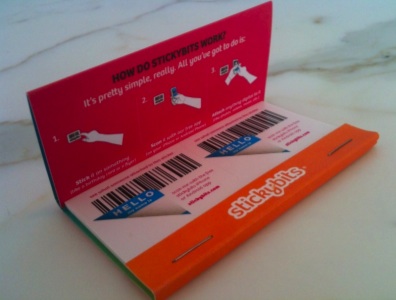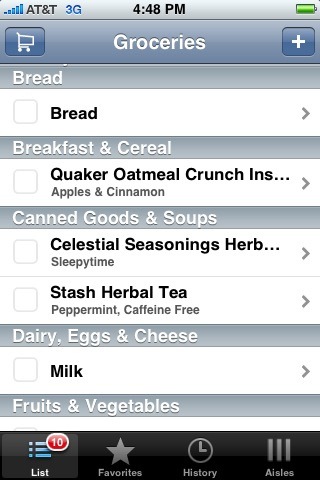Yesterday, we unveiled the first results from our innovation study (co-launched by Shareable.net and Latitude Research) which explores the impact of information accessibility on real-time food decisions, through a quantitative analysis of participants' personal stories.
Specifically, the study examines ways in which in-the-moment answers can help us to make food choices that are healthier and more sustainable for the environment. It also considers ways in which offline retail environments (like groceries stores), integral to our daily lives, can work with us–not against us–to get the information we need.
Today we'll focus on the technology solutions that our participants generated to solve their own information dilemmas.
The study results suggest we're more motivated than ever to make informed decisions, understanding that the information we desire is out there, lurking somewhere in the vast expanse of virtual space–but just out of reach in many offline contexts when having that information would have the greatest effect on our actual behaviors. We have busy lives with limited time and patience to pre-research and rummage for the brand that has transparent labeling and happens to match our preferences. The study found that time spent shopping offline is rarely for discovering new food products or recipes–it's time to grab what we need (with as much attention to food origins, health, etc. as possible) and get on with the rest of life.
"I'm cruising through our local grocery store with 2 kids–ages 3 and 5. No time to waste because the attention span of the tots accompanying me is at an all-time low. It's a last-minute after school, after-work mad-dash to grab the 'staple' items quickly. Well, I've been trying to buy more items locally–everything from meat and cheese and milk to orange juice. Okay, this is where I hit my wall. There is no easy way to figure out which items are actually local… none of the foods are clearly marked. I don't have time to read labels and sift through stacks of cheese." — Participant submission, "The Interactive Future of Food"
According to participants, solutions for the near-future of food might include:
 Smartphone screenshot of a location-aware augmented reality application.
Smartphone screenshot of a location-aware augmented reality application.
The information being accessed by users might relate either to "background" facts and food standards which would help to recognize more healthy or environmentally-friendly products, or to more "logistical" information for comparing prices or navigating a store (efficiently and with minimal frustration!) to find the items we need. But one thing is certain–information must be highly relevant in context and access must be truly hassle-free. Even those shoppers motivated enough to whip out a smartphone mid-aisle currently sense the disconnect between physical and virtual information spaces:
"… but then you find yourself looking at a list of low-relevancy search results that are almost never applicable to the specific item you're holding." — Participant submission, "The Interactive Future of Food"
-
Mobile applications–especially ones which provide information that is richly, contextually relevant to our offline environments (and objects in them). Regardless of the type of information sought, three in 10 participants (which was 6X the number who actually used smartphones while shopping!) suggested a mobile phone solution to their information problems, with 43 percent of these participants specifying the use of a mobile application. Whether they needed to know official standards for "organic" eggs, or simply needed to locate organic eggs in some nearby aisle, participants were equally likely to suggest a mobile phone solution to satisfy their varied information requests.
One current offering, an iPhone application called RedLaser, better connects users with comparison cost information by providing online price listings via barcode scanning of an in-store item.
RedLaser from Jeffrey Powers on Vimeo.
It's a solid start but, in the context of food shopping, some users feel that it only gets part of the way there, largely because it lacks a local focus. "Grocery items that are on sale are not [called out] in Redlaser's listings; local grocers are also not listed," explained one participant who currently uses the app. "The result is that I miss out on sale items which can have a big effect on the bottom line. A more ideal solution would be a RedLaser app that cross-compares brand and sale prices for local grocery stores."
-
Seamlessly integrating information into our physical surroundings, such as via mobile QR codes/barcodes and RFID scanning–technologies which 16% of participants suggested to fill their own information gaps. (Topically, Stickybits recently hit the market, bringing barcode scanning for mobile users further into the mainstream as a way for individuals to "tag their worlds"; Stickybits are adhesive barcodes readable by iPhone and Android applications which allow users to attach digital content–from YouTube videos to Wikipedia pages–to real-world objects and places. They are then accessible to other users via the Stickybits app.)
Barcodes for shopper use, attached to products and shelves in food stores, could offer information (and visual media), making official labeling standards, farming practices, food origins, and user reviews and recommendations easily accessible in real-time. "QR codes or something similar, standardized across the food industry, would help all of us smartphone users a lot with getting information about the food item we're currently looking at," remarked one study participant.
 Stickybits barcodes, unveiled at SxSW Interactive 2010.
Stickybits barcodes, unveiled at SxSW Interactive 2010.Augmented reality, which overlays environmentally relevant Web information onto a smartphone's camera view, also came through as an emergent trend for better "embedding" information into physical spaces.
So who is ultimately responsible for making material improvements in information accessibility–for realizing these solutions?
Participants were more likely to suggest solutions which positioned their local stores (over product suppliers) as information sources, creating a natural opening for retailers to step up and supply the kinds of digital tools which facilitate informed purchases.
Nearly half of participants (45 percent) suggested portable solutions, which might take the form of mobile applications–or store-provided barcode scanners, among a number of other possibilities. Stationary solutions in stores, however, were also popular, with 31 percent of participants suggesting them.

Next: Local, sustainability, and community-oriented implications for food and food-purchasing environments. Plus, a selection of "outliers"–non-representative solution ideas that we felt were worth acknowledging–directly from participants' narratives. Tomorrow's post will focus on









